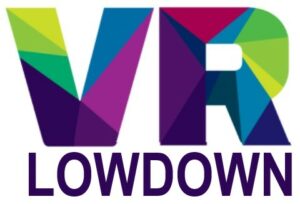I’ve been using both the Meta Quest 2 and HP Reverb G2 as my main VR headsets since they were released. I’ve used them both for hundreds of hours across a wide variety of VR experiences and games. They are both terrific VR headsets, but the best one for you will depend on what you plan to use your VR headset for. This article covers everything you need to know before deciding whether the HP Reverb G2 or Meta Quest 2 is the right VR headset for you.
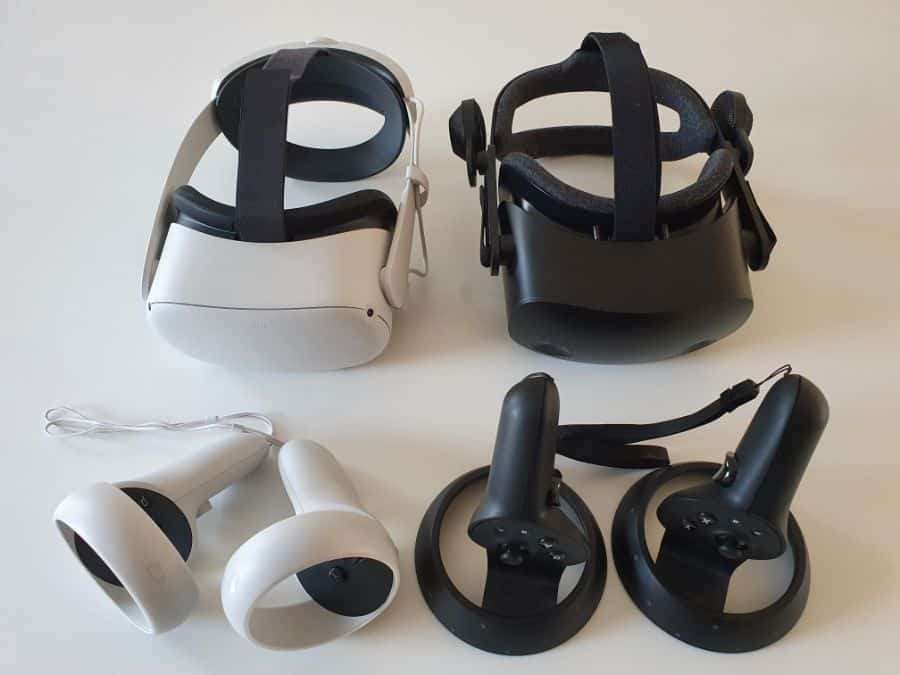
Reverb G2 Vs Quest 2: Bottom Line
The Meta Quest 2 is a better VR headset for most people as it provides great performance in all areas, and has terrific versatility to be used as a standalone VR headset and as a PC VR headset using a wired or wireless connection to a VR-ready PC. Although not excelling in any specific area, it provides good performance all-around and is excellent value for money.
After owning both headsets since they launched, I find that I spend much more time using the Meta Quest 2 than the HP Reverb G2 due to the ease of use, flexibility, and ability to use it wirelessly in both standalone and PC VR mode.
Having said this, the HP Reverb G2 has better resolution, greater visual clarity, better sound, is more comfortable, and is an incredible VR headset that is always a joy to use. If you plan to mainly play seated VR experiences where visual clarity and immersion are critical, in particular flight and racing simulators, the Reverb G2 is the better option.
Reverb G2 Vs Quest 2 Specifications
| HP Reverb G2 | Meta Quest 2 | |
| Dimensions | 74.9 x 185.9 x 84 mm | 191.5 mm x 102 mm x 142.5 mm |
| Display | 2 x 2.89” LCD panels (RGB sub-pixels) | Single 5.46-inch fast switch LCD (RGB stripe) |
| Resolution | 2160 x 2160 per eye | 1832 x 1920 per eye |
| Refresh Rate | 90 Hz | 72 Hz, 90 Hz, 120 Hz variable |
| Lenses | Fresnel-Aspherical | Fresnel |
| FOV (Horizontal/Vertical) | 98°/112° | 89°/112° |
| Pixels Per (Horizontal) Degree (PPD) | 22.04 | 20.58 |
| Weight | 550g (without cable) | 503g (Elite strap with battery adds 319g) |
| Tracking | 6 DoF dual controllers tracked by HMD | 6 DoF dual controllers tracked by HMD. Basic hand tracking. |
| IPD Adjustment | Smooth, manual IPD adjustment (60 – 68mm) | 3 manual IPD settings (58, 63, 68 mm) |
| Sound | Off ear speakers | Integrated stereo speakers |
| Headstrap | Front-hinged, rigid head strap, adjustable with velcro straps | Soft, material head strap (optional elite strap available) |
| Price | $599 (Currently on offer for $399) | $399 for 128GB/$499 for 256GB |
Meta Quest 2
The Meta Quest 2 is a standalone VR headset that can also be used with a VR-ready PC via a wireless or wired connection. It is powered by a Qualcomm Snapdragon XR2 processor, Adreno 650 GPU, and 6GB RAM. It has a single-cell Lithium-ion battery with 3640 mAh or 14 Wh capacity, providing 2-3 hours of battery life while being used in standalone mode, and comes with either 128GB or 256GB of storage.
There is a huge amount of content available on the Oculus store that can be played directly on the Quest 2 headset, but you can also connect to a VR-ready PC via a wireless or wired USB connection to play PC VR titles, providing most of the benefits of a PC VR headset and a standalone VR headset in one package. You will need a minimum of 6.5 x 6.5ft (2m x 2m) of playspace to enjoy room-scale VR games. You no longer need a Facebook account to use a Quest 2, but you will need to create a Meta account.
HP Reverb G2
The HP Reverb G2 is a Windows Mixed Reality VR headset that requires a VR-ready PC to use. It is not able to function as a stand-alone headset but focuses on providing an excellent PC VR experience. It is capable of playing any PC VR experience and is not restricted to the WMR platform.
Visual Clarity And Screen Door Effect
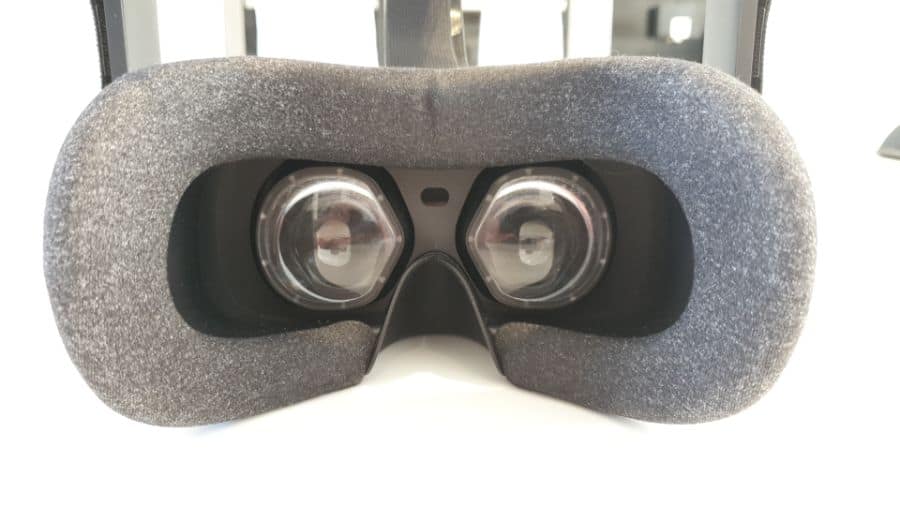
The HP Reverb G2 provides incredible visual clarity, a reasonable sweet spot, impressive lenses, and high-quality display panels. It has 22 pixels per degree (PPD) of vision meaning that everything looks clear, even at a distance.
Text is clearer and more readable than almost any other VR headset unless you are prepared to pay many times more than the cost of a Reverb G2. This is still well below the resolution of the human eye, which can resolve up to 60 PPD, but it’s much better than VR headsets from the recent past.
There is effectively no screen door effect noticeable on the Reverb G2. You could try very hard to detect it, but it is essentially non-existent. As is typical with all headsets that use fresnel lenses, there are some god-rays noticeable, particularly when you look at bright objects on a dark background. Otherwise, there is minimal noticeable visual distortion or chromatic aberration.
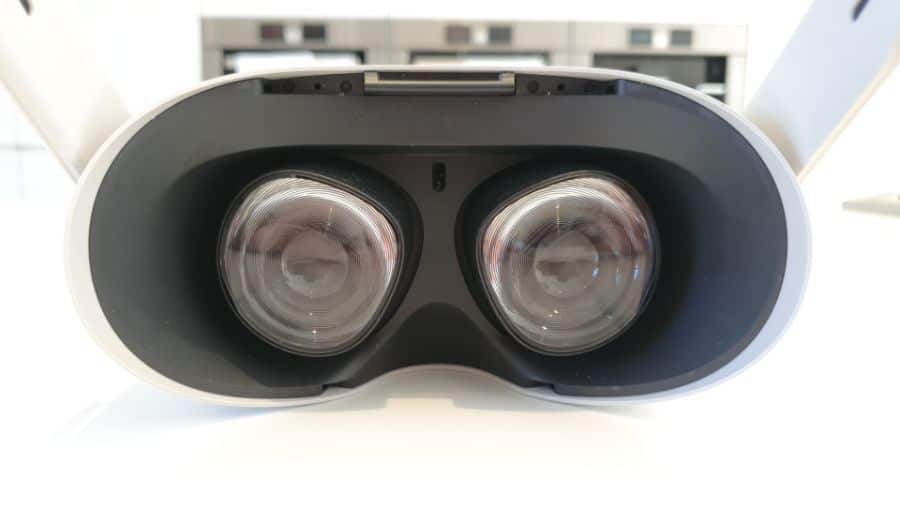
The Quest 2 has lower resolution panels than the Reverb G2, but the panels and lenses are impressive, providing a clear visual experience. When you initially switch on your Quest 2 and you see the Meta logo on a dark background, you may notice some god rays and visible signs of the ridges of the fresnel lenses.
I remember being a little concerned that visual artifacts were going to be a problem, but thankfully, the real-world visual clarity is excellent, and the displays and lenses perform well. The only times I’ve really noticed significant visual artifacts are in the menus of games such as Skyrim VR and Golf Plus VR, but during actual gameplay, I’ve always been impressed by how clear the visuals are. God rays are no more of a problem with the Quest 2 than with any other VR headset that uses fresnel lenses.
The Quest 2 does not have quite the same level of visual clarity as the Reverb G2, and text is noticeably more pixelated, particularly at medium distances. You can also detect some screen-door effect at times, although you do have to look closely for this and it doesn’t detract from the overall experience.
For the vast majority of games and experiences, the Meta Quest 2 provides a clear, impressive visual experience. It was only when I played simulator games like DCS, Microsoft Flight Simulator, and Assetto Corsa, that the decreased visual clarity became noticeable. It’s not bad by any means, it’s just that the Reverb G2 is the clear winner in terms of visual clarity.
Tracking Of Reverb G2 Vs Quest 2
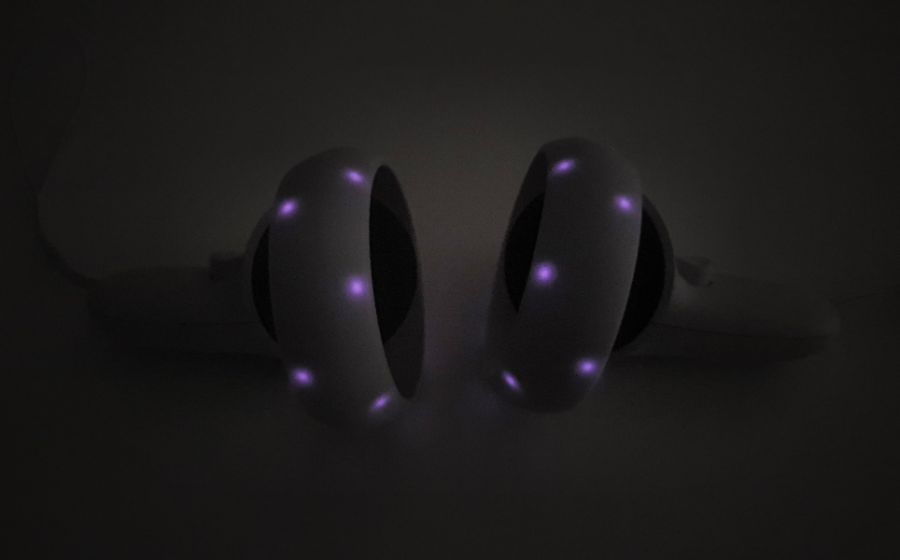
Both Meta Quest 2 and HP Reverb G2 use inside-out tracking. This means that tracking is handled by the headset and controllers alone, with no external tracking hardware being required. I think for most VR users, this is the best type of tracking, although it is not as good as using external lighthouse tracking, such as that used on the Valve Index and similar VR headsets.
In my experience, the Quest 2 has better overall tracking performance, although both are perfectly acceptable, and I didn’t have any significant issues playing any VR games with either headset.
Inside-out tracking is generally great when the cameras have a clear view of both controllers, and you do not occlude the view of one controller behind the other. Once you start lifting your hands above your head, or putting them behind your back, this introduces blind spots, and the tracking becomes more reliant on the gyroscopes, accelerometers, and magnetometers to detect the controller positions.
When playing fast-paced games such as Beat Saber, Eleven Table Tennis, and Gorilla Tag, I only ever encountered rare occasions where I felt that the inside-out tracking impacted my performance compared to Lighthouse tracking. Overall, the Quest 2 has a slight edge in terms of tracking, particularly in situations where one controller is occluded by the other.
Comfort: HP Reverb G2
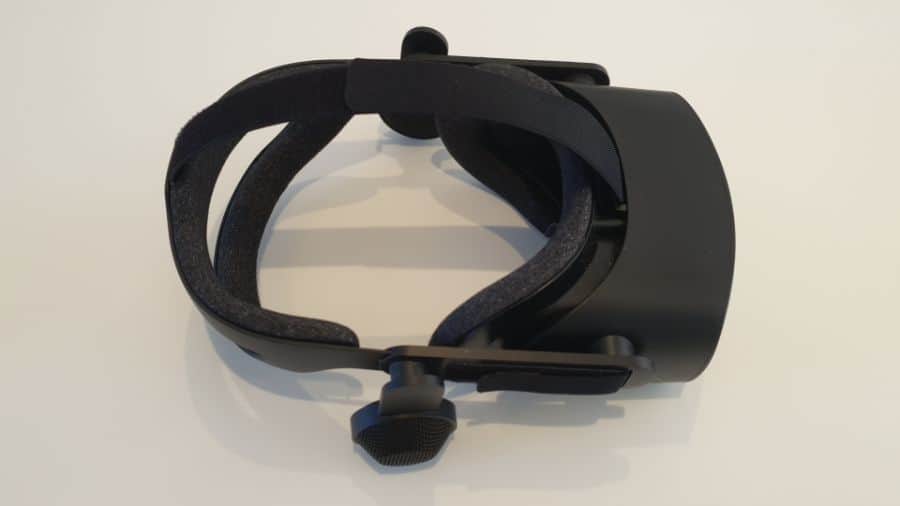
The Reverb G2 is an extremely comfortable headset to wear for a long period of time. The face gasket is made of soft, upholstered foam and the back of the head strap also has the same material. The fit is adjusted via a strap at each side, and whilst this isn’t a high-tech solution, it works well. Once you have the fit of your headset adjusted, you can put it on and off easily without adjusting it.
The head strap pivots upwards at the front, so you can easily align the headset on your face, ensuring you have good visual clarity, before bringing the head strap down over the back of your head to achieve a secure fit.
Both the facial interface and head strap feel like they are cushioning your face and head, and the headset feels well balanced when wearing it, even though it is markedly front-weighted. There is absolutely no light leak when I wear the Reverb G2, and once I learned how tight I needed to have the velcro straps to prevent the headset from moving while in use and balance comfort, I could easily wear it for many hours without any discomfort.
Comfort: Meta Quest 2
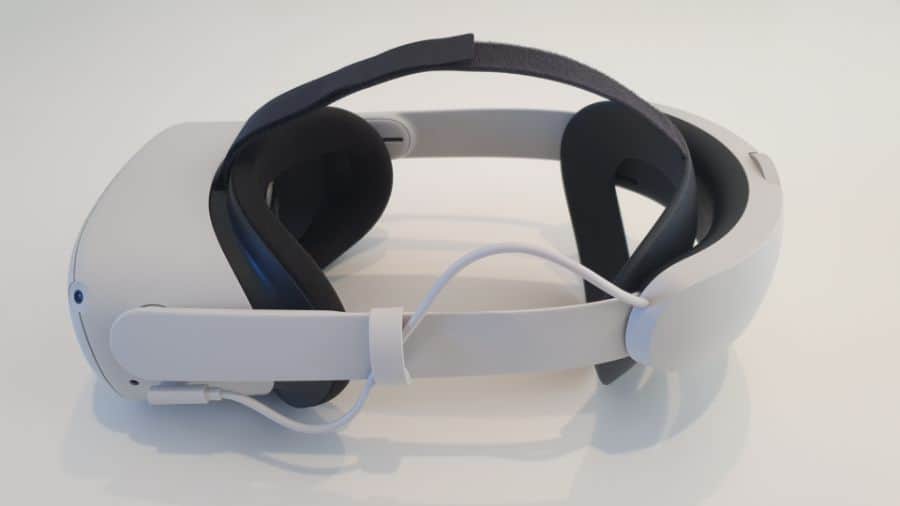
With the default material head strap, the Quest 2 is nowhere near as comfortable as the Reverb G2. I was perfectly able to wear it for a few hours without discomfort, but it doesn’t feel as pleasant to wear as the Reverb G2. Thankfully, I purchased the Elite Strap with Battery for my Quest 2, which is a complete game-changer in terms of comfort.
There is an option to get the Elite Strap alone, or the Elite Strap with Battery. The Elite strap provides a much better fit, providing a rigid strap that fully encircles your head, securing the headset fully. There is a knob at the back of the Elite strap that ratchets the fit of the headset and can be adjusted in a few seconds to provide a comfortable fit. The back of the Elite Strap is made of rubber, that holds your head firmly, and whilst not soft and cushioned like the Reverb G2, is very comfortable.
The best comfort option for the Quest 2 is to opt for the Elite Strap with Battery, as the battery position at the back balances the weight of the headset very well, and the Elite strap is very comfortable to wear for extended periods of time. With this setup, I can easily use the Quest 2 for many hours in complete comfort, and the almost doubling of battery life that this provides, means you rarely need to stop playing before you are ready to take a break.
Overall, if you are planning to get the Quest 2, I would strongly advise you to get the Elite Strap with Battery. This does increase the price of the Quest 2 by $119, often making the Quest 2 the more expensive option, depending on what deals are available, and what model of the Quest 2 you opt for.
Light Leak
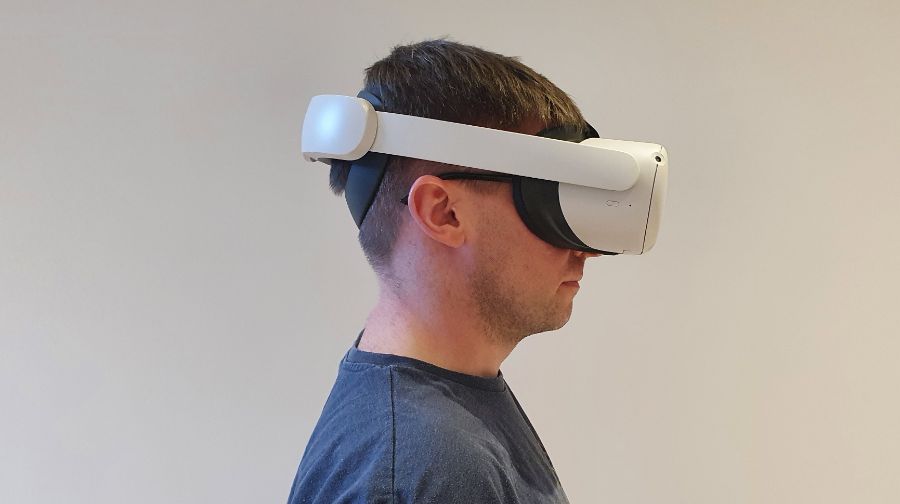
With the default facial interface of the Quest 2, you will notice significant light leak around your nose and in the lower part of your vision. Even when using the Elite Strap, this does not improve much. You can of course buy an aftermarket facial interface that reduces or prevents this light leak, but whether you want to do this will depend on your preference.
In contrast, the HP reverb G2 has no light leak at all when I use it. The facial interface hugs my face firmly, completely isolating me from the outside world. This feels great and improves the level of immersion in many games. This is particularly important for seated, simulation games, where you really don’t want anything that breaks the sense of immersion.
However, there are advantages to having a little bit of light leak on the Quest 2, and for general VR use, I actually prefer this.
- When playing room-scale VR games, I am able to glance down and see the floor, allowing me to orientate myself within my playspace without having to take the headset off. I don’t find having a bit of light leak detracts from my enjoyment of the majority of room-scale VR experiences.
- Light leak also results in more ventilation, which almost completely stops my lenses from fogging up while playing. In contrast, I typically have to stop using the Reverb G2 after the first few minutes to un-fog the lenses, particularly if the headset is cool when I start, which encourages warm water vapor to condense against the cool lenses. There are a number of ways to reduce or prevent VR lenses fogging up, but they aren’t perfect.
Meta Quest 2 And HP Reverb G2 Controllers
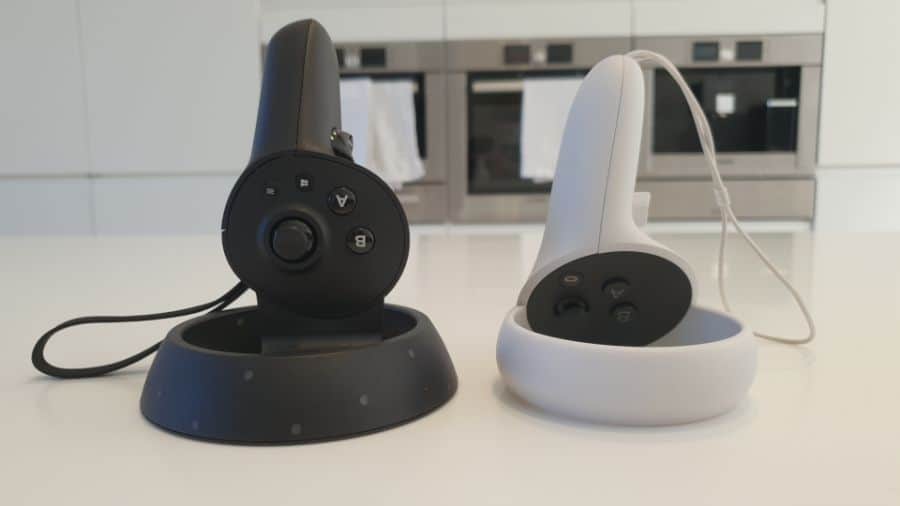
Both the Reverb G2 and Quest 2 controllers share similar design choices, with ergonomic grips, a similar arrangement of buttons, and a tracking ring at the top of each one. The Quest 2 controller is significantly more compact than the HP Reverb G2 controller, yet feels more robust, and is a little more comfortable to hold.
The only main issue with the Reverb G2 controller is the batteries. Specifically, using rechargeable batteries can be a little temperamental. The Reverb G2 controllers are rated to work with 1.5V AA batteries, which is what the vast majority of non-rechargeable batteries are. However, most rechargeable batteries have a voltage of 1.2V, which will lead to your Reverb G2 reporting a low controller battery very quickly when using these.
This seems to be an intermittent issue, and I do in fact use 1.2V rechargeable batteries in the controllers of my Reverb G2, but it does mean I have to switch them out more often than I would like. In contrast, the Quest 2 has an incredibly long controller battery life and only uses one AA battery per controller.
One other thing to note is that some Quest 2 owners have had issues with controller stick drift, which is a common issue with any controller with a thumbstick. I get the impression that this is no more common than with similar types of controllers, and there are a number of ways you can fix this yourself.
Overall, both the Reverb G2 and Quest 2 controllers function well, but the Quest 2 controllers are a little more comfortable to use.
Reverb G2 Vs Quest 2 Lens Sweet Spot
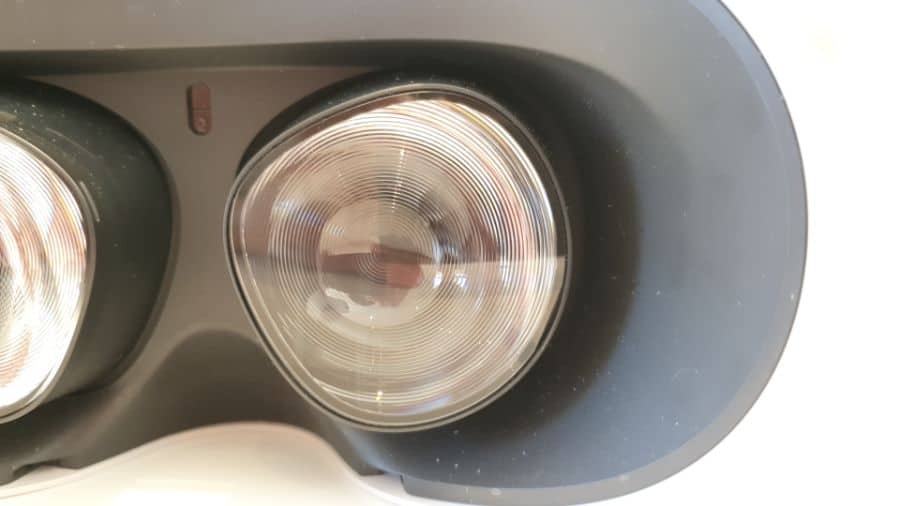
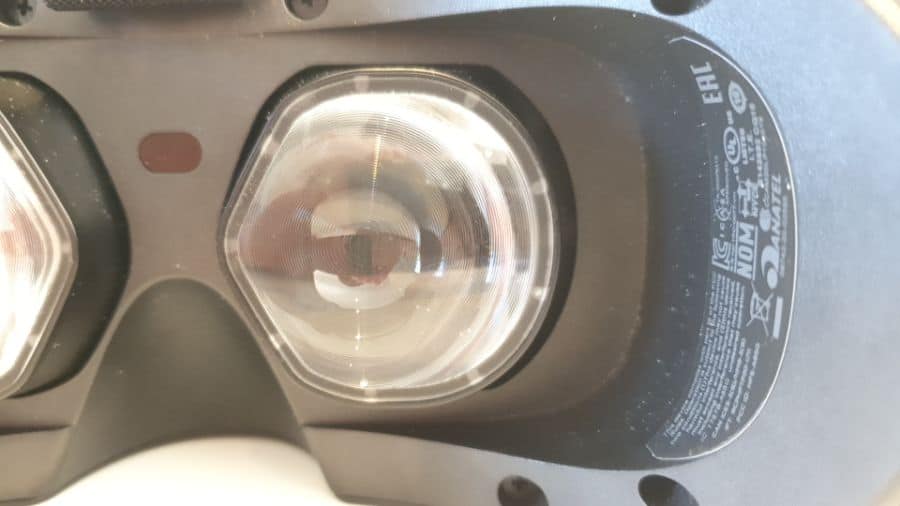
The sweet spot refers to the area directly in the center of the lenses where visual clarity is perfect, and moving out of this area leads to more blurry visuals. The larger the sweet spot, the more tolerance there is for where your eyes are positioned in front of the lenses, and what area of your vision will look completely clear.
Some people have criticized the relatively small sweet spot of the HP Reverb G2 headset, but I’d have to say that I don’t see a huge difference in this between the Quest 2 and Reverb G2. I have done informal tests of the sweet spot of the Quest 2 and Reverb G2 lenses that show little difference between them.
With that said, you do need to ensure that you position each VR headset on your face so that your eyes are well aligned with the lenses. This may improve in the future, with changes to the technology and type of lenses that are used in VR headsets, but for current headsets with fresnel lenses, the area of complete visual clarity will always be relatively small.
Lens Fogging
As I mentioned earlier, lens fogging is a significant issue that you will encounter when using VR headsets, but it impacts different headsets to varying degrees. It’s caused by warm water vapor condensing against the cool lenses of your VR headset.
Generally, I’ve found that the lenses of my Quest 2 almost never fog up to the extent that I need to stop using it to clean them. This is largely due to the fact that the facial interface does not form a tight seal around your face, allowing plenty of ventilation around your face, reducing the humidity and temperature, and preventing the type of conditions that cause lens fog.
This might seem like a fairly minor point, but it can get really annoying when your lenses repeatedly fog up, particularly when playing more physically demanding games. There are a number of techniques that you can use to prevent VR lenses from fogging up, but none work flawlessly.
Generally, if I turn my Reverb G2 on 5-10 minutes before I want to play, this helps the lenses warm up, preventing too much lens fog, but it is still much more of an issue than with the Quest 2.
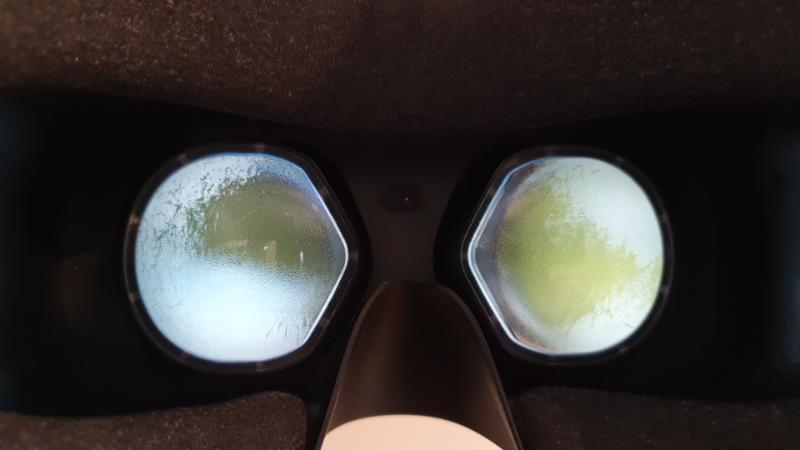
Versatility
Versatility is the main reason I recommend that most people should opt for the Quest 2 over the HP Reverb G2 unless you have very specific plans for what you will be doing in VR. Prior to getting the Quest 2, the HP Reverb G2 was my main headset, and I honestly didn’t think I would use the Quest 2 anywhere near as much as I do. However, being able to play standalone experiences, as well as being able to connect to my gaming PC wirelessly to play PC VR titles is so convenient and feels like the future for VR.
Honestly, I hate the feeling of having a cable hanging down from my VR headset, and you never really lose awareness of the cable when you are playing room-scale VR experiences. Yes, I can manage the cable very well, and I don’t let it get in the way of me enjoying VR, but the freedom of using the Quest 2 wirelessly feels so good, and more than makes up for the areas where the Quest 2 is objectively not as good as the Reverb G2.
Whenever I want to jump into VR quickly, it just feels so much easier to pop on my Quest 2 than to have to plug in my Reverb G2, make sure the cable is in a good position, load into the WMR platform, and then load whatever game I want to play.
When using my Quest 2 with my gaming PC, I don’t even bother using the Link cable anymore, as the performance I get from Air Link, to wirelessly connect to my PC is so good. The caveat to this is that I have a Wi-Fi 6 router in the room I use for VR, in direct line of sight to me when I am playing. The router is connected via Cat6 cable to my home network, providing the perfect conditions required for Air Link to work perfectly.
If you don’t have this setup, you can connect your Quest 2 via the Link cable or compatible USB cable to your VR-ready PC and use your headset in the same way as you would a Rift PC VR headset. You can play games on the Oculus store, on Steam, or on any other PC VR platform. I have a compatible USB cable that was considerably less expensive than the official Link cable.
Reverb G2 Vs Quest 2 Sound
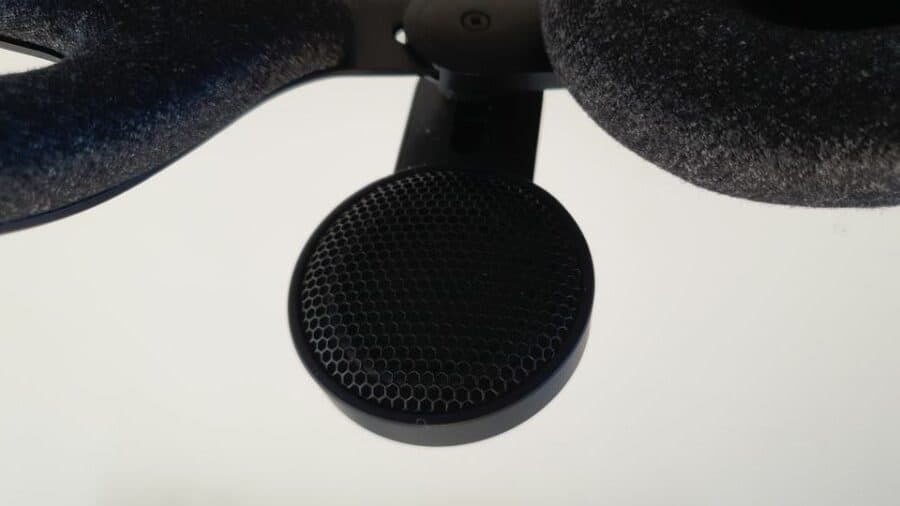
The HP Reverb G2 uses the same speakers as the Valve Index, and I can’t say enough good things about these. They sit just off your ears and you can easily adjust them so they sit right over your ears. The sound quality is fantastic, and I have been seriously impressed.
They do project some of the sound into the room, so other people nearby will be able to hear what you are hearing, but as long as this isn’t a problem for you, they are a fantastic option.
The Quest 2 also has integrated speakers, but these are integrated into the headset itself, rather than being close to your ears. I think the quality is pretty good, and more than adequate for most people. I don’t make use of any other speakers while I am using the Quest 2, and I’ve never really felt any need to use external headphones.
The sound quality of the Quest 2 speakers is not as good as the HP Reverb G2, but in keeping with most other features of the Quest 2, it is good enough for the vast majority of people who will be using this headset. The Quest 2 has a 3.1mm audio jack on the side of the headset, so if you do want to use your own headphones, you can do this very easily. You can also technically use Bluetooth headphones, although this isn’t officially supported, and performance in games isn’t great, as you will experience a fair amount of audio lag that could detract from your experience.
Software
This is an area that the Quest 2 wins hands down. Meta has invested eye-watering amounts of money into building out the Quest ecosystem, with a slick Quest 2 home environment and a well-stocked app store with a broad range of games.
The HP Reverb G2 is a Windows Mixed Reality headset, and the software is significantly less impressive. When you turn on your Reverb G2, you will automatically load into the Windows Mixed Reality Portal, but I don’t really use this for anything, and usually jump over to Steam for most of my VR entertainment. I don’t have any major criticism of how the Reverb G2 works with WMR, and honestly, the WMR platform is entirely fine, but it’s just blown away by the competition.
Pros And Cons Of The Meta Quest 2
| Pros Of Meta Quest 2 | Cons Of Meta Quest 2 |
| Great versatility to be used as a standalone or PC-VR headset | Visual clarity is not as good as HP Reverb G2 |
| Excellent all-rounder | Worse default audio than Reverb G2 |
| Excellent value for money | Light leak at bottom of facial interface |
| The best standalone headset available today | The basic head strap is not very comfortable. I strongly recommend getting the Elite Strap with Battery. |
| All features are good enough for all-round use | Jack of all trades, master of none. |
| Massive user base and great developer support | The Oculus/Quest platform is a relatively closed ecosystem. |
Pros And Cons Of The HP Reverb G2
| Pros Of HP Reverb G2 | Cons Of HP Reverb G2 |
| Amazing visuals, unrivaled by competing headsets. | You need a VR-ready PC to use it. |
| Terrific audio. | Tethered VR is not as good for room-scale experiences. |
| Great value for the headset. | Can be temperamental when connecting to USB ports. |
| Very comfortable. | The tracking is not as good as Quest 2, or externally tracked headsets. |
| A terrific VR headset for use with simulators. | Less suited for general VR use. |
Who Should Get The Meta Quest 2
You should opt for the Quest 2 if you are interested in having many different VR experiences and playing a variety of VR games. The Quest 2 provides terrific versatility to do whatever you want in VR. It is the ultimate all-rounder.
It’s a cost-effective way to experience VR without having to invest in a VR-ready PC. By the time you add in the Elite Strap with Battery, it’s certainly not cheap, but it provides a fantastic VR experience for the price. The Quest 2 is not a perfect VR headset, and as with all developing technology, there is always a better headset on the horizon, but it is a great option for most people right now.
For me, the Meta Quest 2 is a VR headset that I use on a daily basis because of the ease of use and flexibility to experience virtual reality in a variety of ways. I play simulators such as DCS world, sports games such as Premium bowling and Golf Plus VR, RPGs such as Skyrim VR, and social games such as VRChat. I also use VR art apps, watch movies, attend live VR events, and experiment with emerging VR use cases. The overall experience is great, and the technological limitations rarely get in the way.
Who Should Get The HP Reverb G2
Whilst the Quest 2 is a terrific all-rounder, the Reverb G2 excels in a narrower range of use cases. On the surface, it is more comfortable, has better visual clarity, a slightly wider FOV, and has better sound. However, you’ll need a powerful VR-ready PC to use it, and you’ll be stuck with a cable tethering you to your computer.
If you’re going to spend the majority of your time playing games where visual clarity and immersion are critical, particularly seated VR simulators such as flight and racing simulators, the Reverb G2 provides an objectively better experience than the Quest 2. As long as you have a computer capable of providing a good VR performance, this is the better option.
